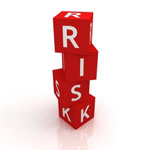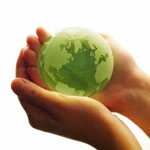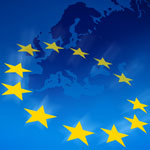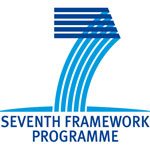Showing Spotlights 17 - 24 of 87 in category All (newest first):
 Labelling is a central regulatory tool for risk governance. It aims at meeting a number of goals: It should enable consumers to make informed purchase decisions, avoid consumers being misled and promote innovation. Hence, consumers take part in the risk management of different product groups. Labelling of nanotechnology products has been part of the early discussion on nanotechnology regulation, both at national and EU level. Member states have refrained from independent national initiatives. However, nano-specific labelling obligations have been adopted in European law for cosmetics, food and biocidal products. In contrast, international initiatives for voluntary labelling have not succeeded on the market.
Labelling is a central regulatory tool for risk governance. It aims at meeting a number of goals: It should enable consumers to make informed purchase decisions, avoid consumers being misled and promote innovation. Hence, consumers take part in the risk management of different product groups. Labelling of nanotechnology products has been part of the early discussion on nanotechnology regulation, both at national and EU level. Member states have refrained from independent national initiatives. However, nano-specific labelling obligations have been adopted in European law for cosmetics, food and biocidal products. In contrast, international initiatives for voluntary labelling have not succeeded on the market.
Sep 17th, 2012
 There is currently no clear evidence that engineered nanoparticles pose a significant threat to the environment. Nonetheless, major gaps in our knowledge exist. The present dossier illustrates the problems in the field of environmental analytics, presents the current state of knowledge on the fate and behavior of ENPs in various environmental compartments and provides an overview of the preliminary results from ecotoxicological research and from model calculations of exposure assessments. At present, ecotoxicological research focuses primarily on controlled laboratory studies involving cell cultures or model organisms. One of the major critiques here is the use of unrealistically high dosages1 Overall, no definitive conclusions can be drawn on whether environmental damage can be expected or not.
There is currently no clear evidence that engineered nanoparticles pose a significant threat to the environment. Nonetheless, major gaps in our knowledge exist. The present dossier illustrates the problems in the field of environmental analytics, presents the current state of knowledge on the fate and behavior of ENPs in various environmental compartments and provides an overview of the preliminary results from ecotoxicological research and from model calculations of exposure assessments. At present, ecotoxicological research focuses primarily on controlled laboratory studies involving cell cultures or model organisms. One of the major critiques here is the use of unrealistically high dosages1 Overall, no definitive conclusions can be drawn on whether environmental damage can be expected or not.
Jul 12th, 2012
 Nanotechnology products, processes and applications have the potential to make important contributions to environmental and climate protection by helping save raw materials, energy and water as well as by reducing greenhouse gases and problematic wastes. Great hopes are being placed on nano-technologically optimized products and processes that are currently under development in the energy production and storage sectors. Emphasis is often placed on the sustainable potential of nanotechnology, but this in fact represents a poorly documented expectation. Determining a product's actual effect on the environment - both positive and negative - requires considering the entire life cycle from the production of the base materials to disposal at the end of its useful life. Not every 'nano-product' is a priori environmentally friendly or sustainable, and the production of nanomaterials often requires large amounts of energy, water and environmentally problematic chemicals.
Nanotechnology products, processes and applications have the potential to make important contributions to environmental and climate protection by helping save raw materials, energy and water as well as by reducing greenhouse gases and problematic wastes. Great hopes are being placed on nano-technologically optimized products and processes that are currently under development in the energy production and storage sectors. Emphasis is often placed on the sustainable potential of nanotechnology, but this in fact represents a poorly documented expectation. Determining a product's actual effect on the environment - both positive and negative - requires considering the entire life cycle from the production of the base materials to disposal at the end of its useful life. Not every 'nano-product' is a priori environmentally friendly or sustainable, and the production of nanomaterials often requires large amounts of energy, water and environmentally problematic chemicals.
Jul 11th, 2012
 A commentary by Steffen Foss Hansen and Anders Baun in this week's Nature Nanotechnology pointedly asks "when will governments and regulatory agencies stop asking for more reports and reviews, and start taking regulatory action?" The two scientists take issue with yet another scientific opinion on nanosilver that has been requested by the European Commission in late 2011: "SCENIHR - Request for a scientific opinion on Nanosilver: safety, health and environmental effects and role in antimicrobial resistance". Specifically, the EC wants SCENIHR to answer four questions under the general heading of 'Nanosilver: safety, health and environmental effects, and role in antimicrobial resistance'. These questions, however, have already been addressed by no less than 18 review articles in scientific journals.
A commentary by Steffen Foss Hansen and Anders Baun in this week's Nature Nanotechnology pointedly asks "when will governments and regulatory agencies stop asking for more reports and reviews, and start taking regulatory action?" The two scientists take issue with yet another scientific opinion on nanosilver that has been requested by the European Commission in late 2011: "SCENIHR - Request for a scientific opinion on Nanosilver: safety, health and environmental effects and role in antimicrobial resistance". Specifically, the EC wants SCENIHR to answer four questions under the general heading of 'Nanosilver: safety, health and environmental effects, and role in antimicrobial resistance'. These questions, however, have already been addressed by no less than 18 review articles in scientific journals.
Jul 4th, 2012
 The Action Plan, presented by the EU Commission in 2004, envisioned integrating "the social dimension into a responsible technology development" and strengthening efforts related to "health, safety, environmental aspects and consumer protection". This encompassed (1) the systematic study of safety-relevant aspects at the earliest possible date, (2) integrating health- and environment-relevant aspect in research and development, (3) conducting targeted studies on toxicology and ecotoxicology and, finally, (4) adapting risk assessment approaches to nano-specific aspects in all phases of product life-cycles. The primary goal was to improve the competitiveness of European industry. The draft presented in mid-2011 for the planned research priorities2 continues this strategic focus. This article describes a selection of 22 current projects dealing with safety research as related to nanotechnology.
The Action Plan, presented by the EU Commission in 2004, envisioned integrating "the social dimension into a responsible technology development" and strengthening efforts related to "health, safety, environmental aspects and consumer protection". This encompassed (1) the systematic study of safety-relevant aspects at the earliest possible date, (2) integrating health- and environment-relevant aspect in research and development, (3) conducting targeted studies on toxicology and ecotoxicology and, finally, (4) adapting risk assessment approaches to nano-specific aspects in all phases of product life-cycles. The primary goal was to improve the competitiveness of European industry. The draft presented in mid-2011 for the planned research priorities2 continues this strategic focus. This article describes a selection of 22 current projects dealing with safety research as related to nanotechnology.
Jun 18th, 2012
 Risks are high on the agenda in our society, to the extent that we might refer to the society as a risk society. Our society experiences emerging technologies, like nanotechnology. Different actors respond to this in a variety of ways. Among these are the consumers, an important, but neglected category of actors in this context. Arguably it is in our role as consumers we first encountered nanotechnology, in the form of nano-enabled products at the consumers market. What consumers think and do, reacting to the mixed messages about benefits and risks of nanotechnology, contributes to how the risk society (with regard to nanotechnology) is developed, and in that sense becomes operationalized. The theme of this thesis is not just the responses of consumers (and how others perceive these) to the introduction of nanotechnology, but also a case study of how the risk society can be operationalized.
Risks are high on the agenda in our society, to the extent that we might refer to the society as a risk society. Our society experiences emerging technologies, like nanotechnology. Different actors respond to this in a variety of ways. Among these are the consumers, an important, but neglected category of actors in this context. Arguably it is in our role as consumers we first encountered nanotechnology, in the form of nano-enabled products at the consumers market. What consumers think and do, reacting to the mixed messages about benefits and risks of nanotechnology, contributes to how the risk society (with regard to nanotechnology) is developed, and in that sense becomes operationalized. The theme of this thesis is not just the responses of consumers (and how others perceive these) to the introduction of nanotechnology, but also a case study of how the risk society can be operationalized.
May 22nd, 2012
 The study focused on the following questions: What do consumers know about nanotechnologies? How do they rate nanotechnologies? How do they obtain information? How would they like to be informed in the future? The results show that the "Nano-Hype" appears to be fading. Surprisingly, regarding the quality of the consumers' statements, e.g. how detailed their descriptions of the individual examples are, it can be said that their knowledge about all fields of application has decreased. Even though the knowledge about all fields of application has decreased, particularly striking is the decline in the fields of surface coatings, construction materials and environmental engineering. In sum, it can be hypothesised that consumer communication on the part of product manufacturers has decreased considerably, or that the information does not reach the target group to the same extent. The public knowledge on nanotechnologies has become more abstract.
The study focused on the following questions: What do consumers know about nanotechnologies? How do they rate nanotechnologies? How do they obtain information? How would they like to be informed in the future? The results show that the "Nano-Hype" appears to be fading. Surprisingly, regarding the quality of the consumers' statements, e.g. how detailed their descriptions of the individual examples are, it can be said that their knowledge about all fields of application has decreased. Even though the knowledge about all fields of application has decreased, particularly striking is the decline in the fields of surface coatings, construction materials and environmental engineering. In sum, it can be hypothesised that consumer communication on the part of product manufacturers has decreased considerably, or that the information does not reach the target group to the same extent. The public knowledge on nanotechnologies has become more abstract.
May 2nd, 2012
 In recent years billions of dollars have been invested in nanotechnology research. Nanotechnology is said to have such pervasive consequences that the 21st century is already proclaimed to become the 'nano-century'. Nanotechnology may also contribute to development in the global South. The new characteristics of nanotechnologies are also said to offer solutions for problems faced by people in the global South, especially in the fields of water, energy, and health. For instance water filters, energy storage systems, solar powered electricity and portable diagnostic tests may be developed and improved using nanotechnology. But the very same features that give rise to new opportunities may also generate new risks. There may be risks to the human body and environment. But for instance also investing in nanotechnology itself can be seen as a risk.
In recent years billions of dollars have been invested in nanotechnology research. Nanotechnology is said to have such pervasive consequences that the 21st century is already proclaimed to become the 'nano-century'. Nanotechnology may also contribute to development in the global South. The new characteristics of nanotechnologies are also said to offer solutions for problems faced by people in the global South, especially in the fields of water, energy, and health. For instance water filters, energy storage systems, solar powered electricity and portable diagnostic tests may be developed and improved using nanotechnology. But the very same features that give rise to new opportunities may also generate new risks. There may be risks to the human body and environment. But for instance also investing in nanotechnology itself can be seen as a risk.
Apr 17th, 2012
 Labelling is a central regulatory tool for risk governance. It aims at meeting a number of goals: It should enable consumers to make informed purchase decisions, avoid consumers being misled and promote innovation. Hence, consumers take part in the risk management of different product groups. Labelling of nanotechnology products has been part of the early discussion on nanotechnology regulation, both at national and EU level. Member states have refrained from independent national initiatives. However, nano-specific labelling obligations have been adopted in European law for cosmetics, food and biocidal products. In contrast, international initiatives for voluntary labelling have not succeeded on the market.
Labelling is a central regulatory tool for risk governance. It aims at meeting a number of goals: It should enable consumers to make informed purchase decisions, avoid consumers being misled and promote innovation. Hence, consumers take part in the risk management of different product groups. Labelling of nanotechnology products has been part of the early discussion on nanotechnology regulation, both at national and EU level. Member states have refrained from independent national initiatives. However, nano-specific labelling obligations have been adopted in European law for cosmetics, food and biocidal products. In contrast, international initiatives for voluntary labelling have not succeeded on the market.
 Subscribe to our Nanotechnology Spotlight feed
Subscribe to our Nanotechnology Spotlight feed





